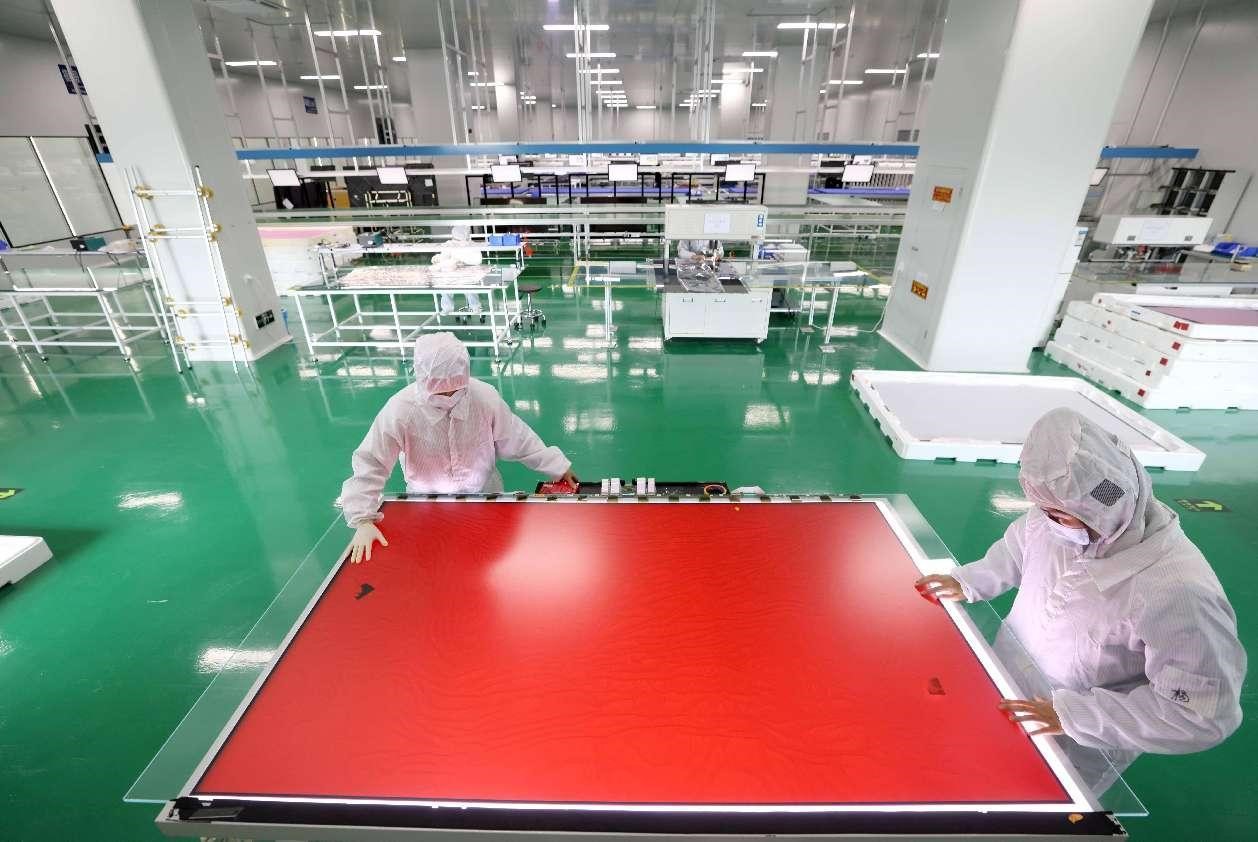China received about 1.6 million patent applications in 2022, ranking first in the world, according to the World Intellectual Property Indicators 2023 report recently issued by the World Intellectual Property Organization (WIPO). According to WIPO's Global Innovation Index 2023, China ranked 12th globally, with six indicators ranking first in the world. Besides, the 24 world-level science and technology clusters in China also for the first time made China the top in the world in the relevant ranking. 
Intelligent robots are carrying objects in a workshop in east China's Jiangsu province. (People's Daily Online/Meng Delong) All these figures prove that China, which has joined the ranks of the world's innovators, is still improving its capability in sci-tech innovation. Innovation is the primary driving force behind development and the strategic underpinning for building a modernized economy. Against the backdrop of a sluggish global economic recovery, China's economy has rebounded and improved. The country is making solid progress in promoting high-quality development and advancing the construction of a modern industrial system. Furthermore, significant breakthroughs have been achieved in sci-tech innovation. According to statistics released by the National Bureau of Statistics this August, the new kinetic energy index of China's economic development (taking 2014 as 100) was 766.8 in 2022, up 28.4 percent from a year ago. The innovation-driven index was 336.3, an increase of 15.5 percent over the previous year. The knowledge capability index stood at 193.4, up 5.9 percent year-on-year. China boasts the world's largest talent pool with the most complete categories, with the total number of talent resources reaching 220 million. The number of full-time equivalent R&D personnel is expected to surpass 6 million in 2022. International observers said that China has continuously enhanced its capability in sci-tech innovation to support high-quality development, and promoted a virtuous cycle of academics, innovation, and production. As innovation-driven development advances and sci-tech innovation continues to empower the real economy, new industries and new driving forces are constantly growing and expanding, thereby enhancing their role in driving economic growth. 
Smart displays are manufactured by employees of a tech firm based in Hefei, east China's Anhui province. (People's Daily Online/Xie Chen) From January to October this year, China's investment in high-tech industries increased by 11.1 percent year-on-year, outpacing overall investment by 8.2 percentage points. The industrial added value of automobile manufacturing grew by 11.3 percent, while the figure in electrical machinery and equipment manufacturing increased by 13.6 percent, compared to the same period last year. Innovation remains at the heart of China’s modernization drive. The innovation and commercialization of new technologies have become important driving forces for economic development. Thanks to the innovation and application of advanced technologies, the Chinese economy has constantly opened up new fields and new tracks. A number of industries with long industrial chains, high technology content, and strong driving capabilities have accelerated their development. The rapid growth in China's exports of new energy vehicles, lithium-ion batteries, and photovoltaic products in recent years is clear proof of this. China will continue to be an economy that creates huge opportunities for bilateral cooperation, said Deputy Prime Minister and Minister for Finance of the Republic of Singapore Lawrence Wong in Beijing. He noted that China boasts a huge economy with many advantages in areas such as advanced manufacturing and green economy, and also possesses a vast market. Huge opportunities lie in China's fertile ground for innovation. Unilever has established its Asian R&D center in north China's Tianjin municipality; Schneider Electric has inaugurated its automation R&D center in Wuxi, east China's Jiangsu province; Honeywell has chosen Shanghai as the location for its global automotive parts R&D center; Volkswagen has announced its plan to develop and produce electric vehicles at a new base in Hefei, east China's Anhui province. The Chinese market not only offers a large consumer base for multinational corporations, but also serves as a fertile ground for the incubation, roadshow, and promotion of new technologies and models. More and more heads of multinational companies investing in China believe that many technological innovations originate from China first and then go to the rest of the world. China has become a breeding ground for large-scale application of emerging technologies. 
The Starbucks China Coffee Innovation Park is opened in Kunshan, east China's Jiangsu province, Sept. 19, 2023. (People's Daily Online/Wang Xuzhong) China's sci-tech innovation not only provides sustained momentum for its own economic growth, but also brings tangible development opportunities to the rest of the world. China has established sci-tech cooperation with over 160 countries and regions, and signed 116 inter-governmental agreements on sci-tech cooperation, creating a new pattern of all-round, multi-level, and wide-ranging open cooperation in the field of science and technology. China has also signed inter-governmental agreements on sci-tech cooperation with over 80 Belt and Road countries. Together, they have established more than 50 joint laboratories, built over 20 agricultural technology demonstration centers and some 70 overseas industrial parks. Additionally, China has set up 10 overseas science and education cooperation centers and nine transnational technology transfer centers with relevant countries. Denis Simon, a distinguished fellow at the Institute for China-America Studies, noted that China's technological achievements are remarkable and playing an increasingly crucial role in the global innovation landscape. China has become an important participant in cutting-edge innovation on the international stage and a significant contributor to solving global challenges, Simon added. China will continue to deeply implement the innovation-driven development strategy, integrate sci-tech innovation resources, lead the development of strategic emerging industries and future industries, accelerate the formation of new productive forces, and stimulate stronger advantages and momentum, so as to drive high-quality economic development with innovation. Source: People's Daily |








7740f3b5-9ecb-438e-9052-76cb2d4bb671.jpg)

